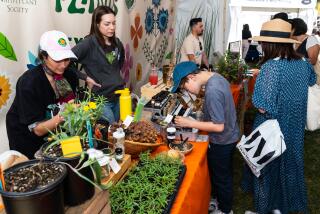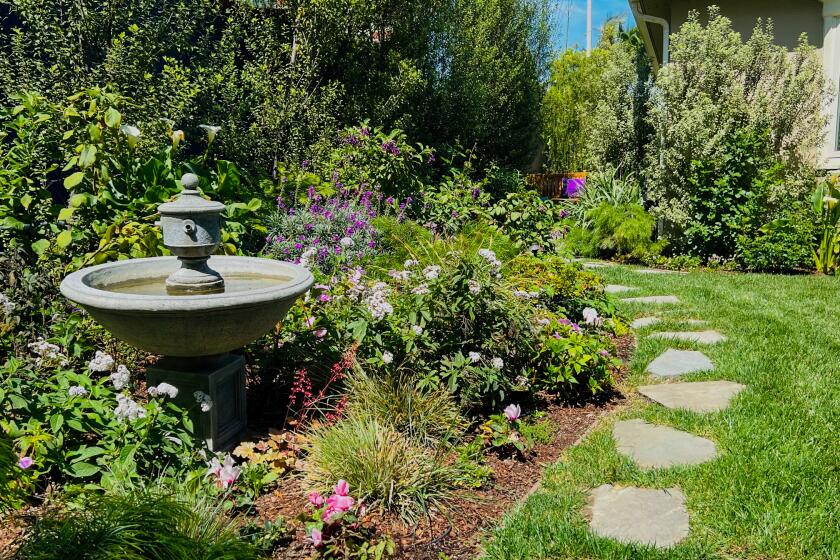Welcome to the Cactus & Succulent Show, the Comic-Con of the cactus world

“It’s the biggest show in the country,” said Pam Schnebelen, 75, one of a record crowd of ardent cactus fans who attended the Inter-city Cactus & Succulent Show & Sale over the weekend. Schnebelen flew from St. Louis with her friend, Christine Walker, just to attend the event. They each packed a suitcase in another suitcase so they could carry home as many plants as possible in their bags. “We just take them out of their pots, wrap them in newspaper and dry-root them,” Walker said. “They’re succulents. They can take it.”
Schnebelen, a “retired techno geek,” began collecting succulents in the 1970s and estimates she already has at least 1,000 cactus and succulents in her personal greenhouse and home. She likes to propagate and grow from seed, but she has no plans to sell any of her brood, unlike Walker, who will get rid of some to bring in others.
“They’re just so unusual and so beautiful,” Walker said, and then exchanged a look with Schnebelen and laughed. “Well, some are so ugly they’re beautiful because they can be very sculptural and dramatic. If you have an artistic bent at all, you can really appreciate them.”

Both women are active members of the Henry Shaw Cactus and Succulent Society in St. Louis, which had its own regional convention a few weeks ago, with about half of the 1,500 exhibits at the L.A. event and only a handful of vendors. More than 20 vendors were selling plants, pots and equipment at the L.A. sale.
“Succulents are just really hot right now,” said Schnebelen. “They’re so hot that brides are walking down the aisle with bouquets of sedum and using succulents as centerpieces at the wedding.” And the craze isn’t limited to the U.S., she said. Her favorite Midwest supplier put her on a waiting list. “He told me the Chinese were sucking up all his seeds.”

The parking lot was near capacity at the L.A. Arboretum when “Cactus Con” opened at 9 a.m. Saturday, and by 10 a.m. as many people were streaming out as in, carrying boxes overflowing with weirdly wonderful plants. Some were bulbous and squat or sent out twisted arms or grew in tortured, constipated shapes. Others resembled woolly tubes, spiny cupcakes or geometric pincushions you might find in the ocean deep. And with prices starting around $10 for a tiny succulent in a 2-inch pot, and around $25-$30 for plants in 4-inch pots, nobody was getting out cheap.
By the end of Sunday, organizers estimated between 2,000 and 2,500 people entered the show, a 15% to 20% increase over last year’s attendance of about 1,800, said Kal Kaminer, 39, the slender, clean-cut chairman-in-training for the 34-year-old event co-sponsored by the Los Angeles Cactus & Succulent Society, the San Gabriel Valley Cactus & Succulent Society and the Long Beach Cactus Club. And the diversity showed in the broad swath of attendees: There were as many tattoos and backpacks as muumuus and walkers.
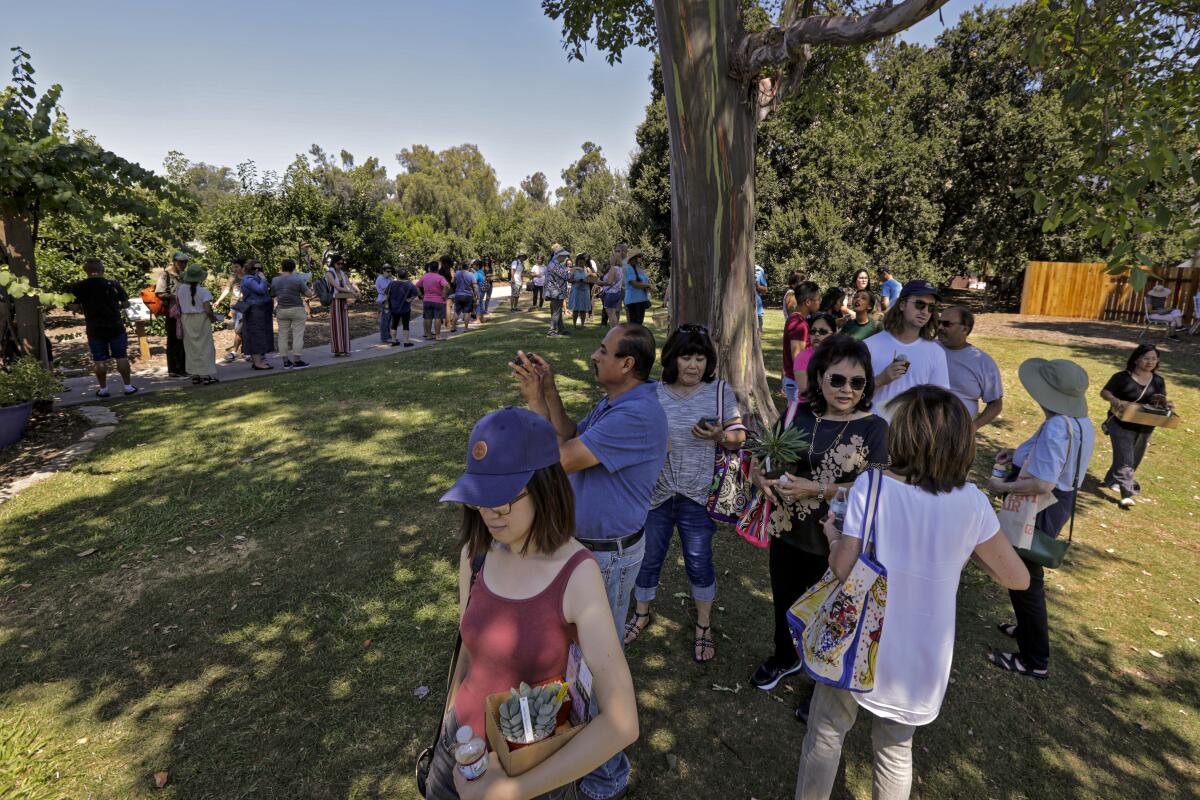
Kaminer, a member of both the L.A. and San Gabriel clubs, credits most of that increase to 20- and 30-somethings who have become smitten with succulents through social media like Facebook and especially Instagram. He got the bug about five years ago, he said, and recently left his job in marketing to open his own nursery in Lake View Terrace called Never Enough Cactus. He loves propagating unusual varieties or creating cactus Frankensteins by grafting one type of cactus onto the body of another — his exhibit at the show was a display about how to create mutants.
His hot sellers right now include the rare Myrtillocactus geometrizans ‘Fukurokuryuzinboku,’ aka “Boobie Cactus,” which grows in a single, thick stalk studded with what appears to be, yes, sagging green breasts. He brought eight of the 7- to-8-inch plants to the sale, and sold them all for $80 to $100. “I wanted to go to my nursery to get more,” he texted ruefully, “but I couldn’t leave the sale.”
The viewing public seemed to share his love for the strange. At the show trophy table, “friends for life” Quincy Irving and Alliance Megala, 20-somethings from East Hollywood and Santa Monica, ogled the winner of the Best Staging trophy, a pair of intertwined Creeping Devil cactus planted in a wide shallow trough custom-created by the grower, Tony Marino, to show off their tendency to grow horizontally like swollen, spiny snakes.

This was Irving and Megala’s first cactus convention, and they listened intently to the talk about trophy winners by Wendell “Woody” Minnich, one of Cactus Con’s founders. “I love them because they’re so peculiar,” Irving said. “They’re something I want to stare at for a long time.”
Megala was looking for ideas to decorate her new apartment. “You know what drives me insane? Fake plants,” she hissed in disgust and shook her head. “I mean, why bother? Just commit.”
After the talk, the two pumped Minnich, 72, for suggestions about the best books or websites for information about succulents. Minnich, owner of the wholesale Cactus Data Plants nursery in Edgewood, N.M., is revered in the cactus world for his knowledge, especially since he’s visited many rare varieties in the wild.
But the former graphic arts teacher and ’70s rock musician for the Humane Society just shook his head when it came to recommendations. Online sources are suspect, he said, because anyone can pretend to be an expert, and he couldn’t point to one definitive book. The best way to learn, he said, is by experience and talking to others. He, like many others, suggested the pair join a local succulent club to get the information they desired from members.
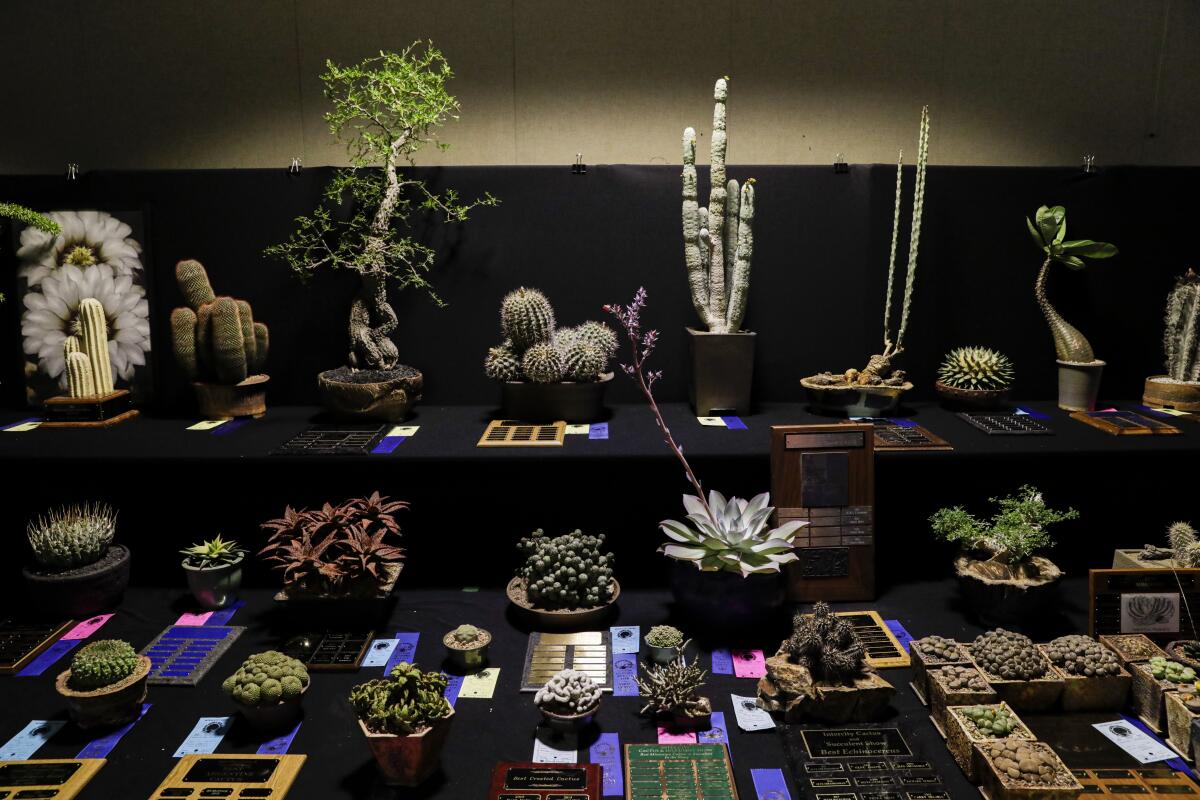
Even attending the convention, you could pick up some pointers. For instance, “All cactus are succulents, but not all succulents are cactus,” Kaminer said, and most potting soils, even those supposedly made for succulents, don’t drain enough to keep succulents alive. The biggest killer of cactus and succulents is overwatering, Kaminer said, and it’s best to mix pumice or perlite with commercial succulent soils 50-50 to improve drainage.
In the past, he said, cactus and succulent societies have been mostly older retired people, but infatuated young people are starting to join to get growing tips and access to plants during meetings and sales. Kaminer said membership has grown since he advocated posting more information on social media and starting the meetings later in the evening, around 6:30 or 7 instead of 5:30, so working people could attend. “We have our social hours at 5:30 now,” he said, smiling.
New exhibitor Angela Clubb of La Crescenta, 49, has joined three clubs and said she learned best from other members and her own sometimes sad experiences in killing plants with too much water or the wrong kind of soil. She’s a freelance TV set arranger who got intrigued by cactuses on Instagram, and this year was brave enough to enter eight of her plants in the exhibit, three of which earned ribbons.
Her bare arms and legs were covered in colorful tattoos, but Clubb was shy and nervous when asked to show off her second-place winner, a Jatropha podagrica, aka a Buddha belly plant with a bulbous body and geranium-like leaves. Novices have pink tickets, intermediates get yellow tags and advanced growers get blue tags. “I’m just a beginner,” she said, “and I don’t know most of the Latin names yet.” She stared at the top winners wistfully, marveling at their size and peculiar twisted shapes, and said next year she hopes to volunteer as a clerk (people who record winners and afix ribbons) so she can follow the judges around and listen to them discuss the merits of the plants. “I’d just like to know how old they are … how long does it take to get them to this size?”
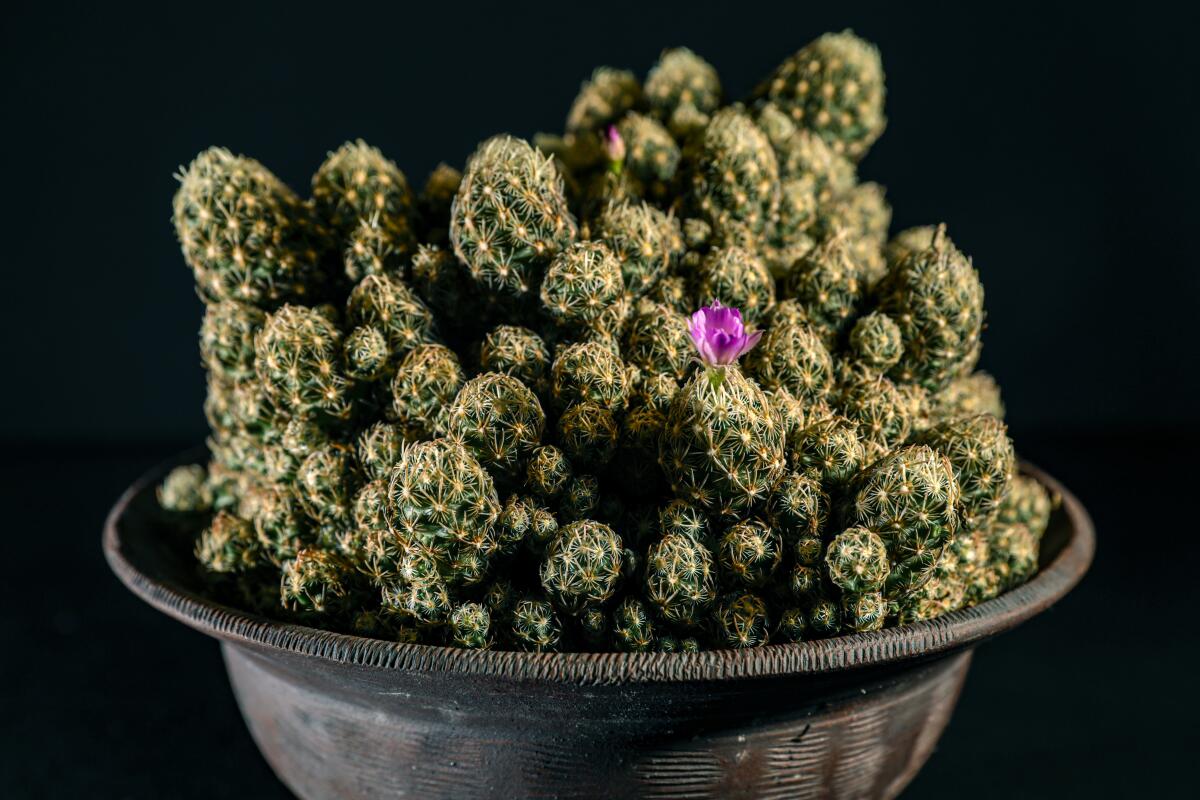
A long time for many varieties, said Kaminer, which is why prices are high. If they grow quickly, he said, you’re apt to find them for cheaper prices in larger retail nurseries.
“It’s not a cheap hobby,” Missourian Walker confessed. On Saturday, she and Schnebelen had already filled a couple of boxes with tiny plants and expected to buy more, even though they think prices are generally cheaper in the Midwest, and climate there makes growing succulents a challenge.
“They’re just so unusual, the shapes, the colors and textures,” she said. “If you live a very portable life, as many young people do, they’re very compact and portable. I see them all the time in young people’s bathrooms.” She smiled. “And you can neglect them. That makes them good too.”
More to Read
Sign up for our L.A. Times Plants newsletter
At the start of each month, get a roundup of upcoming plant-related activities and events in Southern California, along with links to tips and articles you may have missed.
You may occasionally receive promotional content from the Los Angeles Times.


